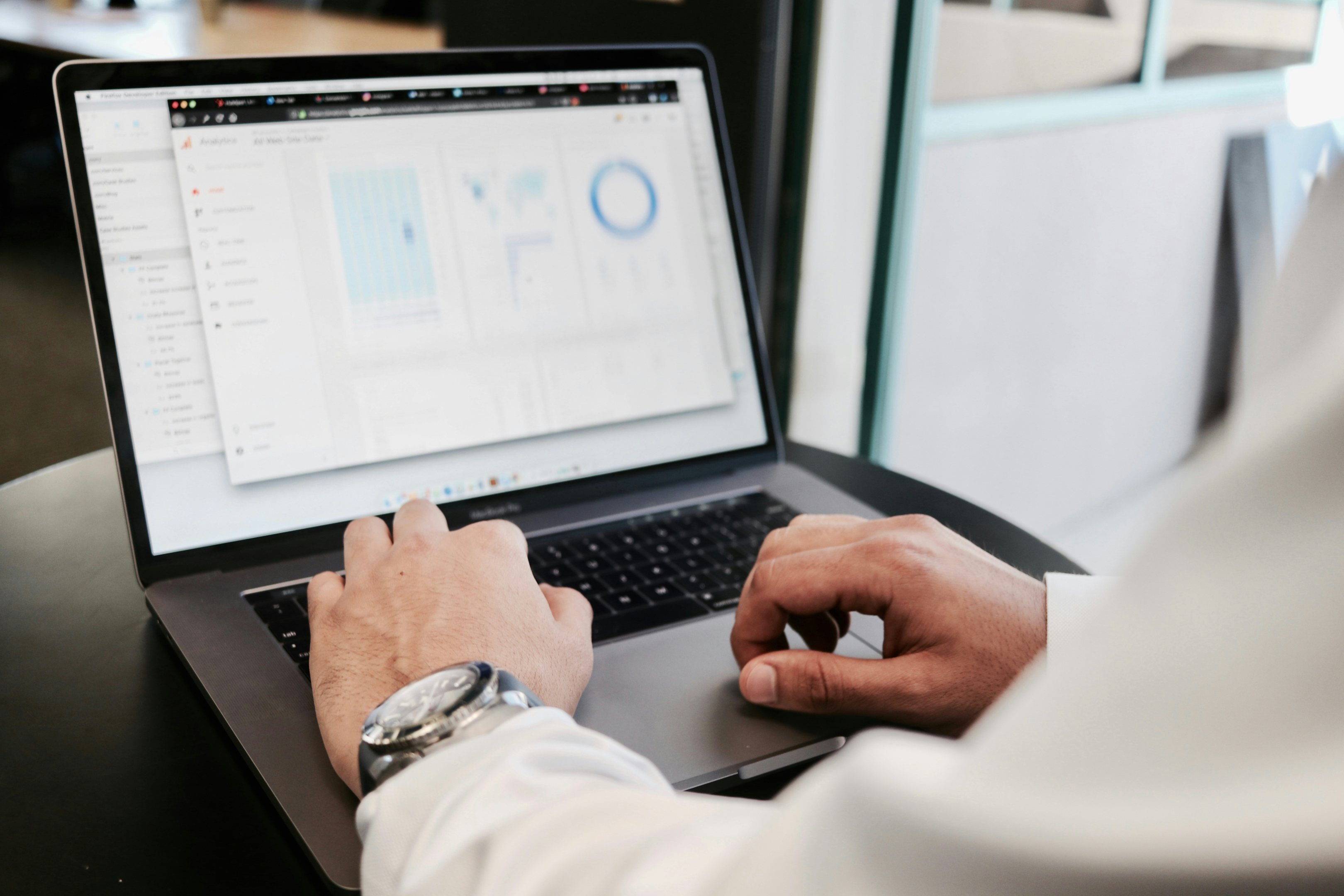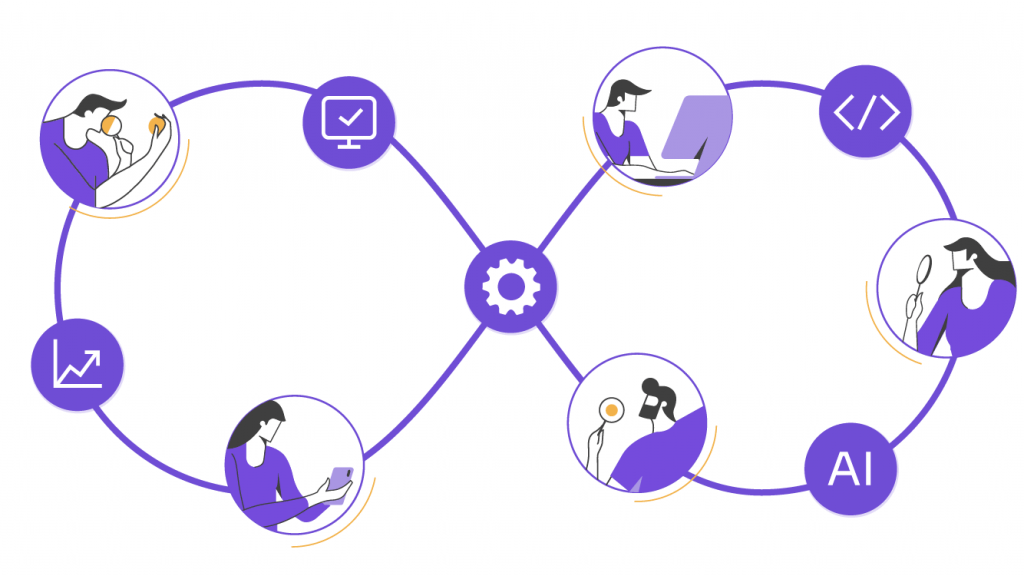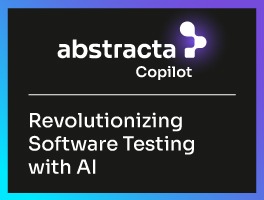Struggling with data quality issues and hidden pipeline failures? Uncover how data observability turns fragmented systems into trustworthy assets with real-time insight and control.


If you are reading this article, you may already know this: monitoring, analyzing, and understanding the data within our systems is more crucial than ever. Observability has emerged as a beacon of insight. It guides us toward higher data quality, enhanced performance, and ultimately, more reliable products.
In this article, we invite you to dive deeper into the world of data observability. We’ll explore its meaning, pillars, metrics, and how to use them, benefits, and trends.
Observability Services for Dev, QA & UX Teams
Let’s make your data work for you!
BOOK A MEETING
What is Data Observability?
Data observability is the ability to monitor, understand, and improve the health and reliability of data across the entire data pipeline. It goes beyond traditional monitoring by offering visibility into data quality, lineage, volume, schema, and freshness. This discipline helps teams detect anomalies, reduce data downtime, and build trust in the data used for critical decisions.
5 Pillars of Data Observability
The effectiveness of an observability strategy relies on monitoring five critical aspects, each providing a distinct signal about the health of your data:
- Freshness indicates how current your data is, helping detect delays or broken pipelines. For instance, real-time dashboards lose value if fed with stale data. Setting freshness thresholds enables teams to respond quickly to ingestion failures.
- Volume tracks expected vs. actual data size. Sudden drops may signal upstream system issues; spikes could mean duplication or faulty logic. Observability tools alert you when patterns deviate from baselines.
- Schema monitoring catches changes in table structure—such as added, removed, or renamed fields—that can break transformations or ML pipelines. These issues often go undetected in traditional monitoring.
- Distribution checks whether data values stay within expected ranges. A spike in nulls or outliers might indicate ingestion bugs or faulty sensors. Tracking this protects downstream analytics from being skewed.
- Lineage maps where data originates and how it flows through systems. It allows data teams to trace the source of issues and assess their impact. In regulated environments, it also supports auditability and compliance.
Together, these pillars offer a comprehensive view of your entire data stack. They enable enterprise data teams to detect anomalies, identify bad data early, and maintain high-quality pipelines with confidence.
Datadog + Abstracta Professional Services
We joined forces with Datadog to leverage real-time infrastructure monitoring services
and security analysis solutions.
BOOK A MEETING
Key Aspects of Data Observability
Beyond its foundational pillars, data observability succeeds when it delivers actionable signals across your entire data infrastructure. These signals reveal how systems behave in real time and guide teams in identifying, diagnosing, and resolving issues.
- Automated monitoring: Observability platforms continuously scan data pipelines for anomalies, performance drops, or schema drifts, allowing for faster incident response.
- Key metrics: Metrics like data freshness lag, schema change rate, null percentage, and table row counts help measure system health. These indicators form the baseline for alerting and root cause analysis.
- Resource utilization: Monitoring how resources (memory, CPU, storage) relate to data processing patterns helps optimize performance and cost, especially in cloud-based architectures.
- Data reliability workflows: Teams implement SLAs, SLIs, and SLOs to define and track expectations around data quality and availability. Observability enforces these with real-time validations.
- Tool integration: A comprehensive data observability solution integrates with your existing data stack—from ingestion tools to BI dashboards—enabling full visibility and traceability.
When combined, these aspects help enterprise data teams successfully implement data observability and move from reactive firefighting to proactive data operations.
Why Data Observability Matters


Data observability is essential to modern data management because it enables organizations to maintain trustworthy data, detect anomalies early, and reduce data downtime. Unlike traditional monitoring, it provides real-time insight into the behavior and health of your entire data stack, from ingestion to transformation and consumption.
When properly implemented, it empowers data teams to understand how data flows across systems, identify data quality issues, and act before bad data spreads. It supports complex data environments, helping data engineers, scientists, and analysts collaborate to enable reliable data and improve decision-making.
As modern data architectures grow in scale and complexity, observability becomes the foundation for resilience and agility. How? Bridging gaps between data sources, pipelines, and consumers, and enabling organizations to deliver high-quality data consistently and at scale.
The benefits extends beyond technology: it fosters transparency, accountability, and trust across your entire data infrastructure.
Benefits of Data Observability
- Faster root cause analysis: Teams can trace data quality issues to their origin and fix them before they affect analytics or downstream systems.
- Reduced data downtime: With continuous monitoring, data pipelines stay operational, preventing disruptions to business processes.
- Improved data quality: Automated alerts for schema changes, missing data, or outliers help catch and resolve issues early.
- Stronger collaboration: Shared visibility aligns data engineering, analytics, and business teams on priorities and problem-solving.
- Scalability and resilience: Observability frameworks support complex data systems by adapting to growth without compromising control.
- Stronger ML and analytics outcomes: Observability streamlines data quality across pipelines, which directly impacts the performance and accuracy of machine learning models and advanced analytics.
Take a closer look at our case studies!
Find out how we’ve helped top brands achieve their business and development goals.
Tools of the Trade


Data observability platforms are essential to implementing effective data monitoring across the entire data pipeline. The most effective solutions offer automated monitoring, real-time alerts, lineage tracing, and low‑code integration.
When choosing a tool, it’s essential to consider how well it integrates with your current stack. A comprehensive solution should connect to your pipelines, warehouses, and reporting and analytics tools, minimizing friction.
Example: Datadog + Abstracta Professional Services
As a Datadog Partner, we offer a tailored implementation of Datadog’s observability tools:
- Data onboarding and tagging: We connect diverse data sources through a robust onboarding process and apply custom tagging strategies to enable accurate categorization and metadata enrichment.
- AI-powered observability enhancements: We integrate advanced AI tools like GPT to improve visibility, detect anomalies, and support proactive decision-making across your infrastructure.
- Performance alerting and dashboards: Our setup includes real-time alerts for service degradation or interruptions and customizable dashboards to track critical observability metrics.
- Team enablement: We train engineers, analysts, and stakeholders on Datadog services, AI copilots, and observability best practices, empowering teams to operate autonomously and collaboratively.
Jointly with Datadog, we provide flexible, comprehensive solutions that integrate with your current systems and evolve alongside your cloud strategy.
How to Operationalize Data Quality Metrics


Several of the metrics below may sound familiar, as they reflect the core pillars of observability. This section focuses on how to measure, monitor, and act on them in practice to improve data quality, reduce data downtime, and strengthen data governance.
Key Data Quality Metrics
- Freshness: How recently the data was generated or updated.
- Completeness: Whether required fields or rows are missing.
- Uniqueness: Identifies duplicate records that may distort analysis.
- Validity: Checks if data fits expected formats or ranges.
- Accuracy: Evaluates how closely data reflects real-world values.
- Consistency: Validates if data remains uniform across sources.
- Timeliness: Assesses whether data is available when needed for decision-making.
Step-by-Step to Implement Observability Metrics
- Select the right metrics based on your pipeline stage, business goals, and data use cases.
- Instrument your systems with data observability tools to track metrics across datasets, columns, and time.
- Create dashboards and alerts to monitor for anomalies, missing values, or schema changes in real time.
- Integrate results into your data quality monitoring and governance workflows to boost accountability and track improvements.
When applied consistently, these metrics provide a strong foundation for maintaining trustworthy data across your entire data stack.
Data Observability vs. Traditional Monitoring


Understanding the difference between traditional monitoring and data observability is key to evolving your data management practices. While both aim to detect problems, their scope, depth, and impact vary significantly.
Traditional monitoring focuses on operational signals—CPU usage, server uptime, job failures. It alerts teams when systems break, but often lacks insight into why the failure occurred.
Data observability, by contrast, examines the health and flow of data itself. It provides a deeper layer of visibility across your entire data pipeline, enabling root cause analysis and proactive responses to data quality issues.
Here’s how the two approaches compare:
| Traditional Monitoring | Data Observability | |
|---|---|---|
| Focus | System performance | Data quality, flow, and lineage |
| Depth of insight | Surface-level alerts | Root cause analysis and context |
| Scope | Infrastructure-centric | Entire data stack and pipeline |
| Response model | Reactive | Proactive and continuous |
| Users | Ops and IT | Data teams and business stakeholders |
Real-world Example:
An e-commerce team notices a sudden drop in sales. Traditional monitoring shows no server outages. But with observability tools in place, the data engineering team discovers a schema change that filtered out valid transactions during processing. With this insight, they roll back the change, restoring data flow and avoiding further loss.
By shifting from traditional monitoring to data observability, organizations gain control over data reliability, reduce data downtime, and enable smarter, faster decisions.
Empowering Data Teams


Observability enables organizations to build a transparent, accountable, and collaborative data culture. It gives teams the visibility they need to manage complexity, scale operations, and deliver reliable data to the business.
From data engineers to data scientists, every member of the team benefits from enhanced visibility into the data lifecycle, enabling better decision-making and more efficient data operations.
- Facilitating Collaboration: By providing shared visibility into data health and performance, data observability creates a collaborative environment where data engineers, scientists, and analysts can align around common issues. It helps cross-functional teams identify and resolve data quality issues, improving communication and process efficiency.
- Driving Innovation: With a clearer view of the data ecosystem, teams can explore new machine learning models, analytics strategies, and business use cases more confidently. Observability reduces the risk of relying on poor data quality, enabling experimentation and accelerating the delivery of insights.
- Business results: Wide visibility across the data stack allows teams to correlate business performance with system-level metrics and anomalies. This connection between data behavior and outcomes strengthens decision-making and makes data operations more accountable.
Looking Ahead
As data systems grow more complex and decision-making becomes more data-driven, strong data observability practices will be essential to maintain control, compliance, and trust.
AI-Powered Observability
Platforms will increasingly integrate machine learning to detect anomalies and automate root cause analysis, helping data teams act faster and reduce the risk of poor data impacting outcomes.
Organization-Wide Access
Observability insights will expand beyond technical teams, empowering business users and non-technical stakeholders to engage with data health metrics. This democratization supports faster, more aligned decision-making.
Governance and Compliance
With rising regulatory demands, data observability will become central to data governance strategies. Its ability to track data movement, transformations, and quality boosts organizations to stay audit-ready while protecting their data sources and users.
Final Thought: Embracing Data Observability


The journey toward observability is both a challenge and an opportunity. It calls for a shift in mindset—from reactive fixes to proactive care of the entire data ecosystem.
When embraced as a core component of modern data strategy, observability strengthens data reliability, quality, and trust. It empowers teams, streamlines data operations, and enables faster, smarter decisions grounded in visibility and collaboration.
It’s a cultural shift toward transparency, accountability, and continuous improvement for resilient, data-driven organizations that lead the path.
FAQs about Data Observability


What Is Meant by Data Observability?
Data observability is the ability to understand the health, quality, and performance of data across its entire lifecycle. It combines monitoring, tracking, and analyzing data behavior to surface issues, detect anomalies, and promote trustworthy data. This enables organizations to make confident, data-driven decisions with reduced risk.
What Are the 5 Pillars of Data Observability?
- Freshness – How recent the data is.
- Distribution – Patterns in data values across expected ranges.
- Volume – Changes in record counts to detect loss or surges.
- Schema – Structural changes in tables or fields.
- Lineage – The flow and transformation of data from source to destination.
What Are Data Quality Metrics?
Data quality metrics are measurable indicators used to assess the condition of data. Common metrics include completeness, accuracy, consistency, timeliness, and uniqueness. Monitoring these values helps identify potential data quality issues and guides data teams in maintaining reliable, high-quality datasets.
What Is Data Pipeline Monitoring and How Does It Relate to Observability?
Data pipeline monitoring tracks the flow, timing, and integrity of data across ingestion, transformation, and storage steps. It helps detect delays, failures, and bottlenecks. As part of data observability, it gives teams real-time insights to maintain data reliability across the entire data pipeline.
How Is Data Lineage Connected to Observability?
Data lineage reveals how data moves and changes across systems. When integrated into data observability practices, it helps teams trace the root cause of anomalies, assess the impact of changes, and improve data governance. Understanding lineage builds confidence in how data is used and trusted.
What Is the Difference Between Data Discovery and Observability?
Data discovery helps teams locate, catalog, and classify their data assets. It’s the first step toward understanding what data exists. In contrast, data observability focuses on how data behaves—its health, accuracy, and reliability—over time. While discovery maps the landscape, observability monitors how it evolves.
How Does Data Observability Differ From Traditional Data Quality Approaches?
Traditional data quality efforts often rely on rule-based validations or manual checks. Data observability introduces automated, continuous monitoring across the entire data stack, identifying issues in real time. This shift enables proactive resolution of bad data before it affects analytics or business outcomes.
In What Ways Can Automation and AI Enhance Data Observability Efforts?
AI and automation allow data observability tools to detect subtle anomalies, forecast issues, and trigger alerts without human intervention. They also support root cause analysis by identifying patterns across systems. This increases efficiency and reduces the time it takes to act on data quality issues.
Why Is Continuous Monitoring Crucial for Maintaining Reliable and Accurate Data?
Without continuous monitoring, data issues can go undetected for long periods, leading to downstream errors. Real-time observability surfaces anomalies as they emerge, enabling faster response and protecting the accuracy and reliability of the entire data environment.
What Are the Techniques of Data Observability?
Techniques of data observability include anomaly detection, metric tracking, distributed tracing, log analysis, and lineage tracking. Together, these practices allow teams to monitor data behavior across systems, detect irregularities, and understand data performance from source to consumption.
What Are the Three Types of Observability?
The three types of observability generally refer to:
- Infrastructure observability – Focused on servers, networks, and uptime.
- Application observability – Concerned with code, logs, and errors.
- Data observability – Dedicated to data flows, quality, and reliability across the stack.
Each plays a role in building reliable, observable systems.
How Does Data Observability Improve Trust and Decision-Making in Organizations?
By providing visibility into the health and lineage of data, data observability helps teams trust the accuracy and freshness of the information they use. This reduces the risk of decisions based on flawed or incomplete data, making business actions more confident and timely.
Why Is Data Observability Important?
Data observability is important because it helps detect anomalies, reduce data downtime, and improve overall data reliability. It supports proactive data management, fosters data quality across the pipeline, and empowers teams to respond quickly to issues before they impact users or analytics.
How Does Data Observability Help Manage Data Silos and Unstructured Data?
Data observability enables visibility across disconnected systems, helping organizations break down data silos and monitor unstructured data sources. By unifying insights from various environments, including cloud, on-premise, and data lakes, observability supports a more complete, accessible view of the data landscape.
How Can Data Observability Improve Use of Data Warehouses and Existing Infrastructure?
By tracking data tables, usage patterns, and quality metrics within data warehouses, observability helps optimize performance and resource utilization. It also extends the value of existing data infrastructure by validating whether data consumers can rely on trusted, timely information for data-driven decision making.
How We Can Help You


With over 16 years of experience and a global presence, Abstracta is a leading technology solutions company with offices in the United States, Chile, Colombia, and Uruguay. We specialize insoftware development, AI-driven solutions, and end-to-end software testing services.
Our expertise spans across industries. We believe that actively bonding ties propels us further and helps us enhance our clients’ software. That’s why we’ve built robust partnerships with industry leaders like Microsoft, Datadog, Tricentis, Perforce BlazeMeter, and Saucelabs to provide the latest in cutting-edge technology.
Check our solutions and boost your test process improvement!


Follow us on Linkedin & X to be part of our community!
Recommended for You
Observability-Driven Quality: From Code to UX Clarity
What is Throughput in Performance Testing? Your Ultimate Guide


Sofía Palamarchuk, Co-CEO at Abstracta
Related Posts
Quality Sense Software Testing Podcast Season 1 Recap
Reflecting on an insightful first season before preparing for season two Quality Sense, a Software Testing Podcast · Recap Season 1 – What we learned in 12 episodes of Quality Sense Podcast One of the most beautiful lessons I’ve learned over the last few months?…
Heuristics in API Testing for Quality Software
Discover the best strategies for API testing in this detailed guide. Learn how to enhance your testing strategy by covering aspects such as efficiency, adaptability, and security testing of Application Programming Interfaces (APIs) through the most well-known heuristics and a new heuristic proposed by our…
Search
Contents
Categories
- Acceptance testing
- Accessibility Testing
- AI
- API Testing
- Development
- DevOps
- Fintech
- Functional Software Testing
- Healthtech
- Mobile Testing
- Observability Testing
- Partners
- Performance Testing
- Press
- Quallity Engineering
- Security Testing
- Software Quality
- Software Testing
- Test Automation
- Testing Strategy
- Testing Tools
- Work Culture





